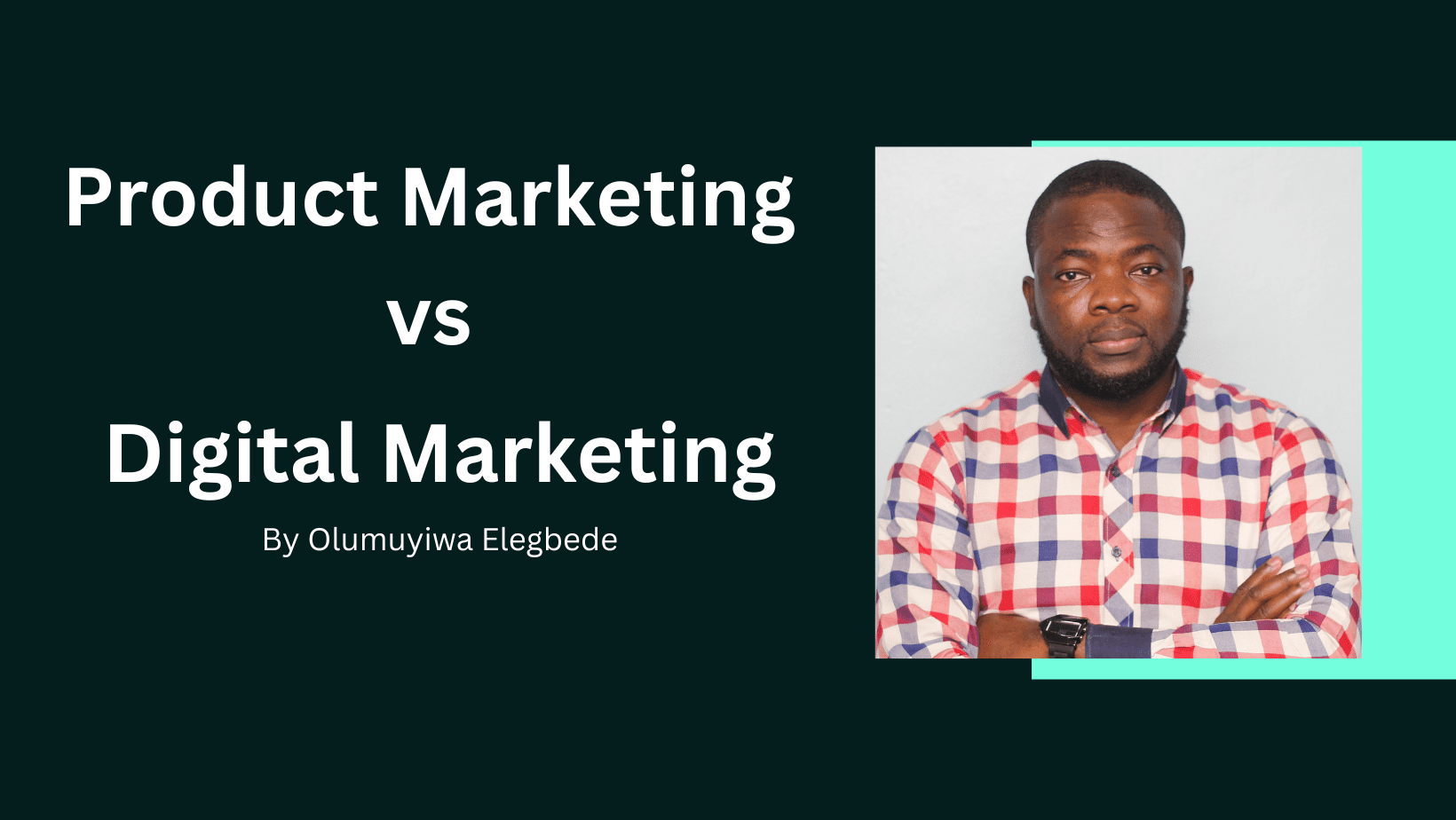This article is written by Olumuyiwa Elegbede
Product Marketing and Digital Marketing are two terms that often mix, but their purpose seems to be a world apart.
They are the ones that have become the main components of the complex and all-encompassing area of marketing. It is necessary to understand not only the difference but also the specificity of the two disciplines in order to understand how Product Marketing and Digital Marketing can contribute to the overall purposes a business is trying to achieve.
In this article, we will address the issue of meaning and role of Product Marketing and Digital Marketing and underline the equal role and different functions of the disciplines.
Product Marketing: Revealing the Value Propositions
Product Marketing involves positioning and marketing a particular product or service to an identified audience. It aims to create demand for the offering, increase sales, and establish product or brand loyalty using unique and compelling value to the customers. Product marketers play a critical role of being the product advocate among the development team and the market.
Key Elements of Product Marketing
- Market Research: One of the major roles of a product marketer is to conduct extensive research about the targeted audience. This information helps them understand customer needs, want, and points of confusion to integrate into the develop product and market it to the customer Based on the research finding.
- Value Proposition: Defining the value proposition is crucial to a Product Marketing plan. A product’s distinct features and benefits are incorporated into a value proposition that is appealing in the drool-worthy sense. They must also strike a chord with the target client, hence the need to identify them.
- Positioning and Messaging: A marketing plan is made up of information and positioning strategies that sales personnel will employ to convey a product’s worth successfully. Identifying ng target client persona segments is required and then developing suitable holograms based on that information.
- Go-to-Market Strategy Access to market: Planning the product’s introduction, distribution, pricing, and promotion strategies to maximize reach and effect.
- Sales Enablement: Allowing the sales personnel to be prepared with the correct information and tools. This may involve the development of sales guides, competitive analyses, sales presentations, and so on.
Digital Marketing: Navigating the Digital Landscape
Digital Marketing refers to a wide range of online marketing strategies and channels used to reach target audiences and engage them on digital platforms and technologies. It includes deploying digital platforms such as websites, social media, email, search engines, and online advertising to create brand awareness, generate leads, and increase conversions.
Key Components of Digital Marketing.
- Optimized Web Presence – A well-developed website forms the foundation of digital marketing, providing a central location for information on the brand and its products, as well as a point of conversion.
- Search Engine Optimisation: This is practiced boosting the site’s rankings and improve its spot-on search engine results pages (SERPs. The key goal is to increase organic traffic and attract it to the site by adopting a wide array of techniques from keyword optimization and link building to content creation and posting on competitiveness.
- Content Marketing: Content marketing is a technique popular among B2B marketers which tends to create and distribute valuable and appealing content to attract more customers to the brand. The content in question may be presented in any given format including blog posts, articles, videos, guest blogs, podcasts, whitepapers, infographics, instructional how-tos, and studies.
- Social Media Marketing: It focuses on employing social media platforms to set up two-way communication with the audience regarding brand awareness, reach, and traditional/public organic and paid performance. This strategy is reported to have a reach of 76% of B2B companies.
- Email Marketing: According to the Content Marketing Institute, more than 73% of B2B companies apply email marketing tactics. This tool helps businesses interact with the leads via one-on-one communication, letters, and nurture the audience into potential conversion.
- Pay-Per-Click (PPC) advertising – This is a way in which businesses bid on certain keywords and then have their ads displayed in search engines and other digital platforms, only paying when users click on these ads.
- Data Analysis – It is a key component of digital marketing, as marketers leverage data analytics to monitor and measure the effectiveness of their campaigns, as well as learn about audience trends, preferences, and return on investment.
Comparisons and Contrasts:
Although Product Marketing and Digital Marketing have related aims with respect to reaching the target audience, they differ in their focus, scope, and execution.
Similarities:
- Audience-Centric Approach: Based on both disciplines’ principles, an audience-centric approach tends to place priority on getting information on the target audience and their needs, wants, and habits as a foundation for tailoring marketing communication accordingly.
- Brand Awareness and Engagement: These are important goals of both Product Marketing and Digital Marketing as they strive to establish a consumer-friendly identification, generate involvement, and encourage brand loyalty by having meaningful conversations.
- Data-driven decision making: The two subject matters share a reliance on data and analytics to ascertain the effectiveness of marketing strategies, pinpoint weaknesses that require improvement, and then adjust.
Differences:
- Scope: In contrast, while Product Marketing primarily concerns promoting an offered product or service, Digital Marketing covers a wider range of online tactics and channels that go beyond just product promotion.
- Strategy: Market research is a strategic aspect of Product Marketing, while Digital Marketing is more tactical, emphasizing the execution and optimization of digital campaigns.
- Cross-functional collaboration in product marketing involves cooperation between the department and product development, sales, and other cross-functional teams, while digital marketing teams have a closer relationship with web development, content creation, and analytics teams.
Conclusion
To conclude, even though Product Marketing and Digital Marketing are distinctive areas of expertise with contrasting objectives and methodologies, they play crucial roles in a marketing strategy. By recognizing what the two have in common and where their divergences lie, organisations can use the best of both worlds to successfully publicize their goods or services, reach consumers, and accomplish marketing goals in the rapidly changing digital world.
About the Author: Olumuyiwa Elegbede is a Google certified digital marketing expert and an associate member of The Chartered Institute of Marketing, UK. He is a tech enthusiast who enjoys reading and doing research and has worked with many tech companies ranging from B2C to B2B. He is a master’s degree holder in Data Science and Analytics from University of East Anglia, UK and loves to teach digital marketing and analysis in his spare time.



































